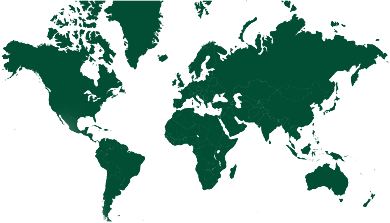Software
2024 • Global Water Pathogen Project (GWPP) Pathogen flow & mapping tool
The Pathogen flow & mapping tool is a decision support tool designed to evaluate pathogen emissions to surface waters and assess the potential impact of sanitation interventions. It allows users to model different scenarios by adjusting factors such as population growth, sanitation access, and faecal sludge and wastewater treatment. The tool enables users to identify high-emission areas and analyze the contributions of different sanitation facilities to pathogen loads. While not explicitly focused on resource recovery, it can be used to assess the effects of sanitation improvements that include resource recovery components such as wastewater reuse or biosolids treatment.
Recovered Materials & Products
Waste Streams
Faecal sludge
Wastewater
Confirmed countries
Germany


What is this tool intended for?
The tool is intended to support decision-making by modelling and comparing the effects of different sanitation and waste management scenarios on pathogen emissions to surface water. It provides insights into which interventions—such as expanding wastewater treatment, improving faecal sludge management, or eliminating open defecation—can have the greatest impact on reducing pathogen pollution.
How does this tool work?
Users begin by selecting a country or region, after which the tool loads default input data related to population, sanitation, and wastewater management. These data can be modified to create multiple intervention scenarios, which are then compared against a baseline scenario. The model estimates pathogen emissions from different sanitation systems and presents the results as maps, graphs, and summary reports. Users can analyse source contributions, explore geographic pathogen hotspots, and assess the relative effectiveness of sanitation improvements. The tool accounts for pathogen reduction through wastewater and faecal sludge treatment using data from the Treatment Plant Sketcher Tool.
Who might use this tool and with which types of stakeholders?
The tool is designed for sanitation professionals, researchers, policy-makers, and NGOs working on sanitation infrastructure and public health. It is particularly useful for governments and international organizations seeking to prioritize investments in sanitation improvements.
What stages of a process can this tool support?
The tool is primarily useful in the planning and policy development stages. It helps decision-makers understand where sanitation interventions are most needed and what types of improvements will be most effective in reducing pathogen emissions to surface waters. It can also be used for impact assessments by modelling changes over time.
What skills, capabilities, and resources are required to use this tool?
The tool is designed for accessibility and does not require advanced technical expertise. However, users with knowledge of sanitation systems, environmental health, and GIS mapping will benefit most from its functionalities. The ability to input local data improves the accuracy of results.
Where can this tool be used?
The tool is applicable in urban and rural settings across different regions. It is particularly useful in areas with high pathogen emissions to surface waters and where sanitation interventions are being considered.
Get the Tool
The tool is available on open access basis online at the GWPP website.
https://www.waterpathogens.org/tools/pathogen-flow-and-mapping-tool
Learn more
The tool is associated with the Global Water Pathogen Project’s Knowledge to Practice (GWPP K2P) initiative and its online book Sanitation and Disease in the 21st Century. See more here at the link below.
https://www.waterpathogens.org/
Technologies
Themes
Monitoring, Evaluation and Learning
Environmental Impact Assessment
Health Impact Assessment